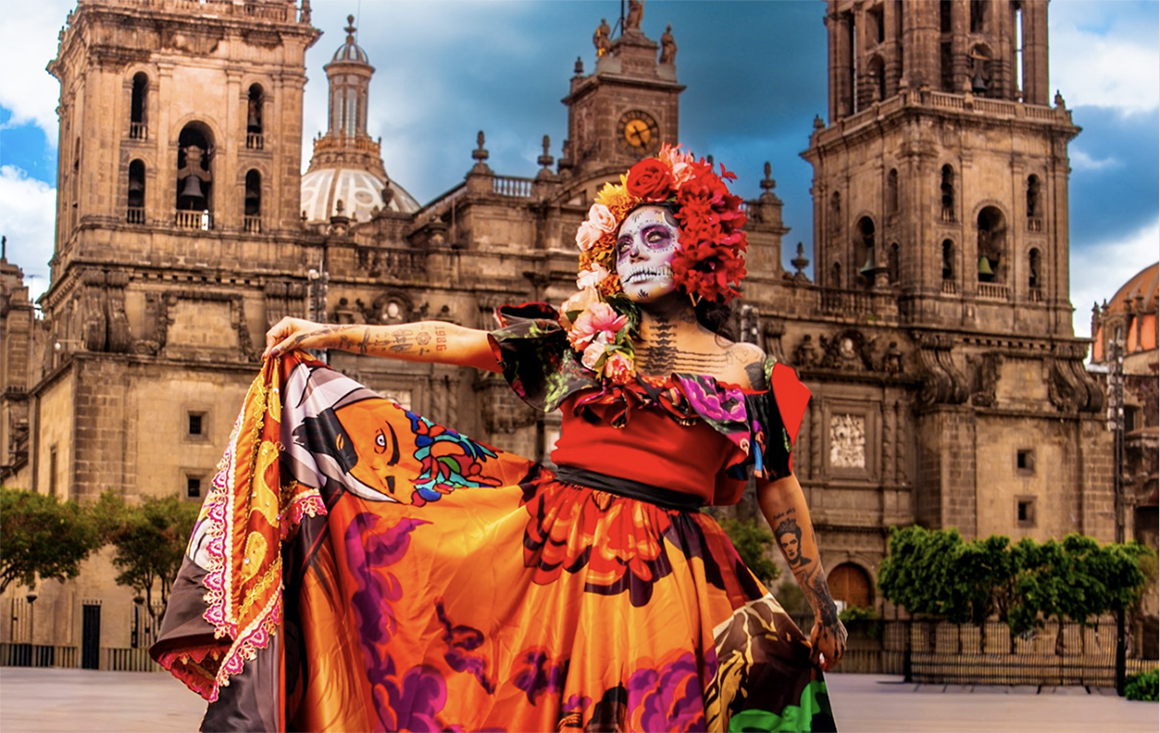Looking For Belonging

How do we see ourselves? How do others see us? And how does it affect the way we view the world?
At Santa Clara, Associate Professor of Photography Takeshi Moro asks his students to consider these and other questions to help them develop visual awareness and individual creativity during their assignments behind a lens.
Moro’s own images often force viewers to consider other perspectives, from refugees seeking asylum in Europe, to his family’s journey from Japan to England to the U.S., and most recently, his new book about aspects of one’s history and traditions that can get dispersed along the way.
Two of his students—Josef Sueoka ’23 and Elena Peng ’24—delved into their own personal histories with photos that capture opposite ends of the human condition: the confidence of being among friends, and the loneliness of struggling to be accepted.
A lingering unease
Peng's story resonates through a handful of haunting black and white self-portraits that reflect a sense of “not quite belonging” in America. Because of a slight speech impediment, she is sometimes perceived as if she’s not English proficient, despite being born and raised in the United States.
“Some letters are hard to pronounce; typically it’s the ‘r’ sound and the ‘t-h’ sound,” says the psychology major. “It’s gotten better over time, but it’s still there.”
In a poignant essay that accompanies her photos, she writes how the misperception, beginning around age six, has prompted people to ask if she is an international student or has an accent.
For the assignment, Peng captured photos taken in or near her family’s Bay Area home where she lives. In the images, she has turned her face away from the lens to convey the sense of discomfort and distance.
“These photos,” she writes of growing up in America, “are representative of how a place can be a ‘home’ in every sense of the word, but still not feel entirely like it.”

Photo by Elena Peng ’24
The world of photography has become important to Peng, who uses her camera as a creative and emotional outlet. Yet it was all new to her, a happenstance, before she enrolled in a Spark Seminars course Moro taught about the legacies of incarceration and resilience in the Japanese American community. Wanting to learn more from him, she signed up for her first-ever photography class, taught by Moro. She’s now a lab and teaching assistant for Moro, and a staff photographer for The Santa Clara.
Says Peng of her mentor's teaching philosophy: “He urges us to think about what is meaningful to us.”
Capturing the in-crowd culture
Sueoka’s photos move in a different direction, celebrating the so-called “AZN” pride among his young adult friends who style themselves after the Asian American rap music/car culture of the West Coast.
“I explore the culture that has sprouted from young Asian Americans that has little to no connection to traditional Asian culture,” writes Sueoka in his artist statement about the series, which earned him a Senior Project Showcase Departmental Award last year.
Sueoka mainly focused on friends from Santa Clara, dressed stylishly as they gather outside a popular South San Jose boba shop where they regularly meet up in their street cars to bond over their hobby. “It’s also a counterculture thing,” he explains. “We're separating ourselves from our parents by acting and dressing a certain way.”
With a degree in studio art and communications, Sueoka hopes to become a documentary filmmaker. But lessons from Moro, his former senior thesis advisor, guide him still, particularly about the power of subtlety in pictures and words.
While considering titles for these photos, for example, he recalls their discussion about using just one word under each image—even if the audience is not familiar with the jargon.
“We played with a lot of ideas about telling part of the story, but not giving the entire story away,” he says of the decision. “You want to let the viewers decide what the story is.”

SCU sophomores, from left: Josh Liu, Kenneth Kang, and Anthony Van; photo courtesy of Josef Sueoka '23
Studying art and art history teaches students to understand where images come from and how they work, giving students an advantage in an increasingly visual world.


